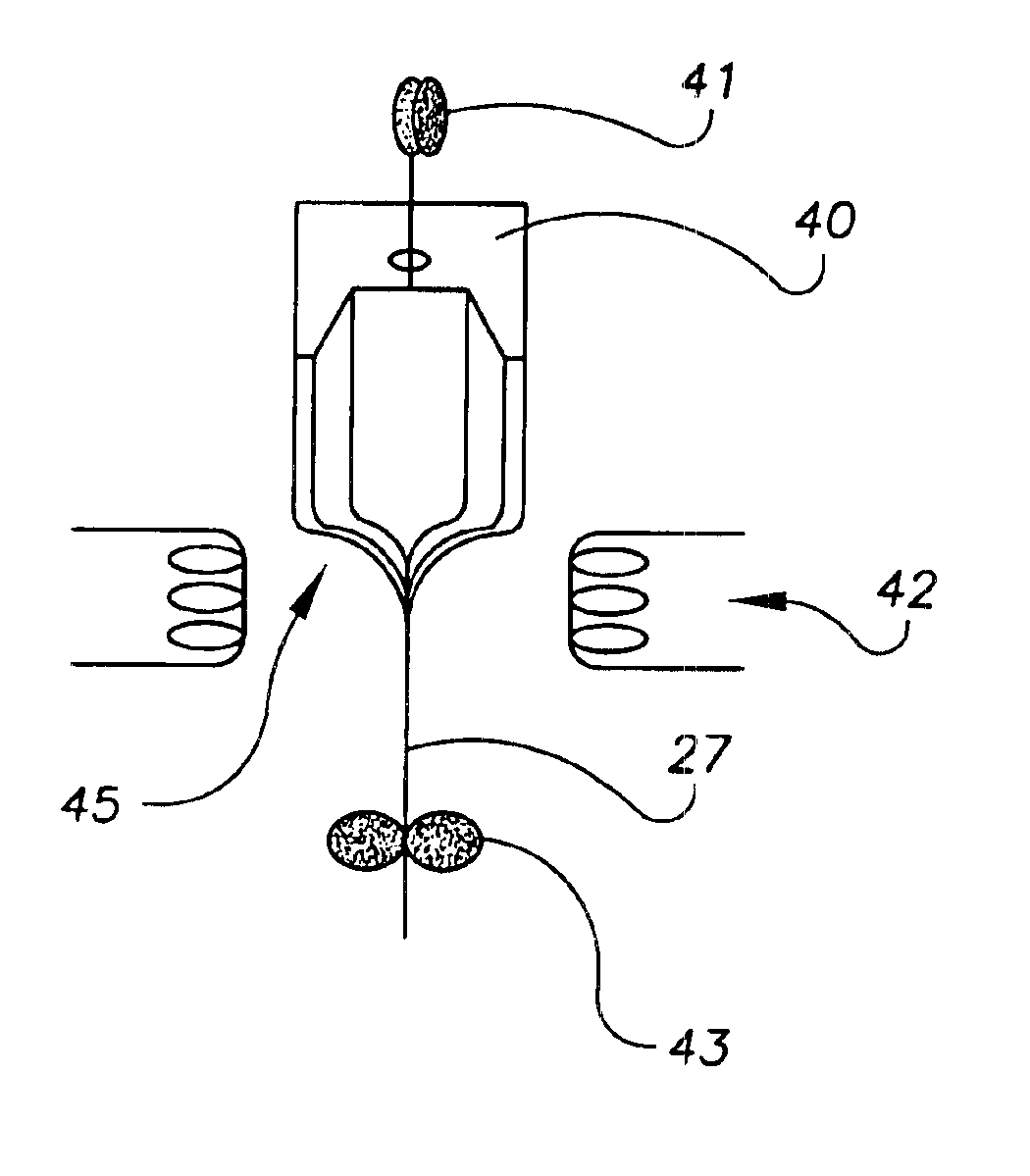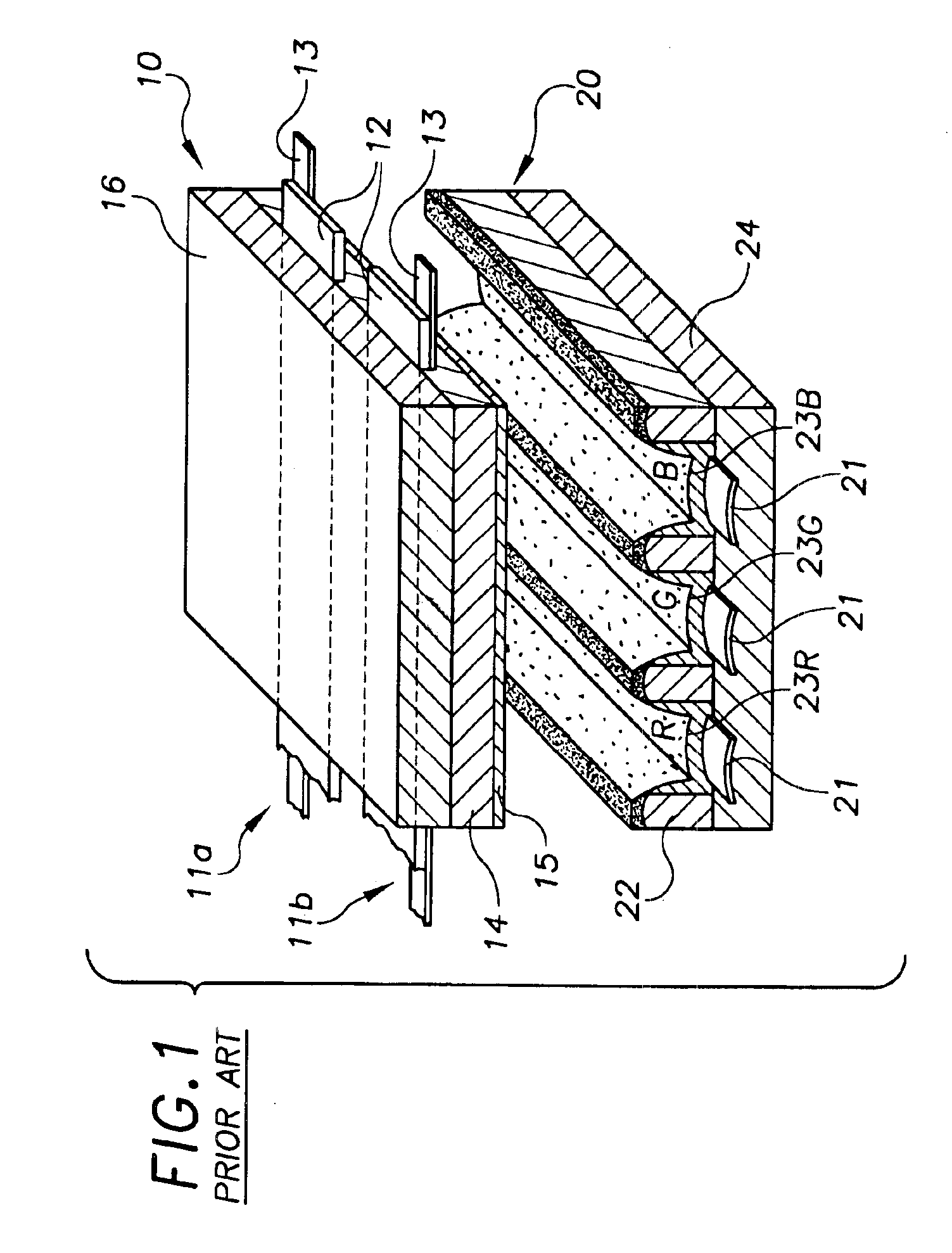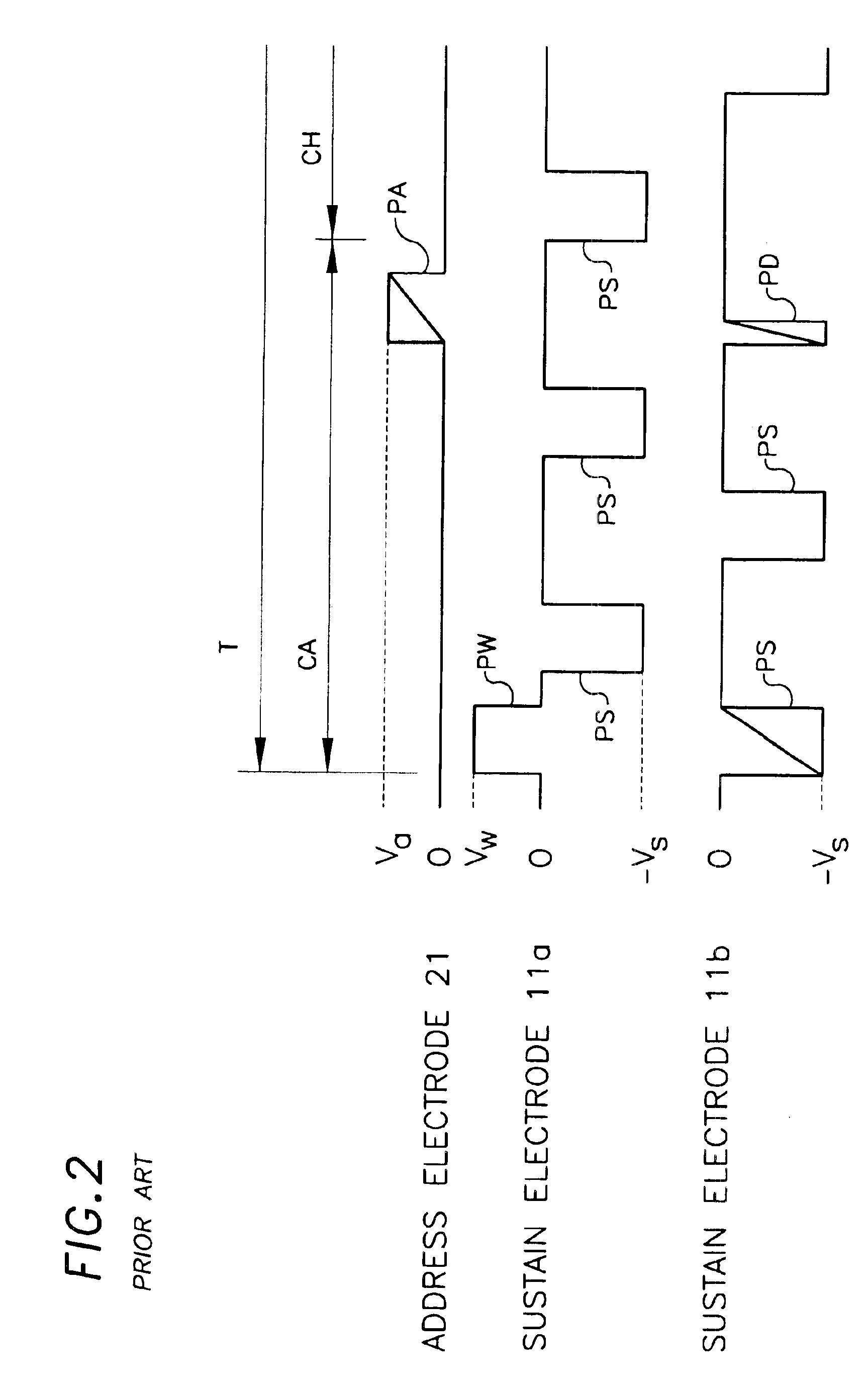Drive control system for a fiber-based plasma display
a control system and plasma display technology, applied in the field of fiber-based fullcolor plasma display, can solve the problems of low efficiency, cost, short life, etc., and achieve the effects of reducing manufacturing costs, reducing capital costs, and reducing materials costs
- Summary
- Abstract
- Description
- Claims
- Application Information
AI Technical Summary
Benefits of technology
Problems solved by technology
Method used
Image
Examples
Embodiment Construction
[0072]In the following description it is understood that the such terms as “top” refers to the section or sections of a panel in a display that is closest to the viewer, whereas “bottom” refers to the section or sections of a panel in the display that is on the half away from the viewer.
[0073]The key invention is that all structure of each row and column of the display panel is contained within each fiber of both arrays. Therefore, the entire functionality of the display is contained within each fiber of the display. Each individual fiber in the top fiber array contains all the structure of each row of the display and each individual fiber in the bottom fiber array contains all the structure of each column of the display. In the invention, glass fibers with wire electrodes are formed by drawing fiber 27 from an appropriately-shaped glass preform 40, as illustrated in FIG. 6. The fibers are assembled into arrays and placed between two glass plates to form the structure of an informat...
PUM
| Property | Measurement | Unit |
|---|---|---|
| pressure | aaaaa | aaaaa |
| viscosity | aaaaa | aaaaa |
| angle | aaaaa | aaaaa |
Abstract
Description
Claims
Application Information
 Login to View More
Login to View More - R&D
- Intellectual Property
- Life Sciences
- Materials
- Tech Scout
- Unparalleled Data Quality
- Higher Quality Content
- 60% Fewer Hallucinations
Browse by: Latest US Patents, China's latest patents, Technical Efficacy Thesaurus, Application Domain, Technology Topic, Popular Technical Reports.
© 2025 PatSnap. All rights reserved.Legal|Privacy policy|Modern Slavery Act Transparency Statement|Sitemap|About US| Contact US: help@patsnap.com



